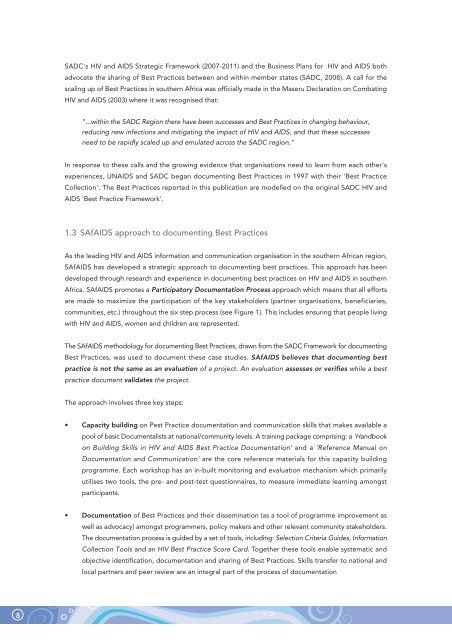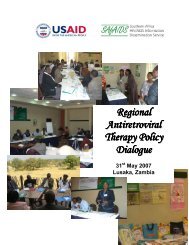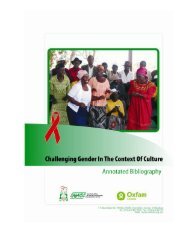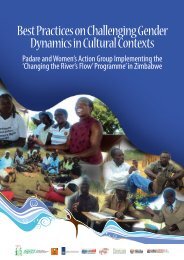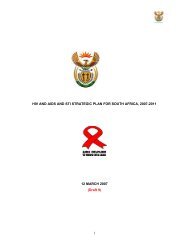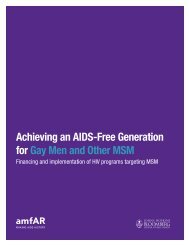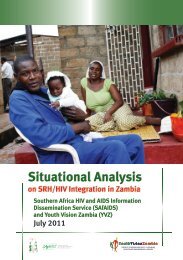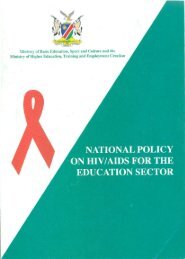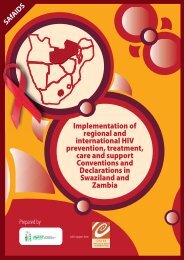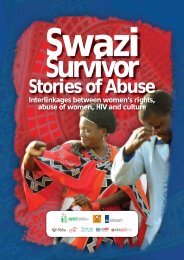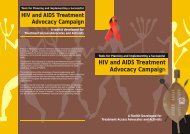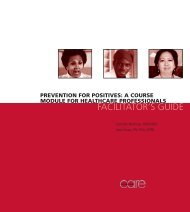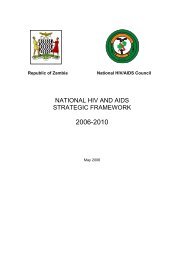About the title <strong>of</strong> the casebook: "Changing the River's Flow."The title <strong>of</strong> this casebook was derived from our understanding that like a river, culture may seem permanentand constantly flowing in one direction, but this is a trick <strong>of</strong> our perception because culture is alwayschanging and adjusting to different circumstances. In fact, geology tells us that rivers change and their'permanency' is <strong>of</strong>ten a trick <strong>of</strong> our perception.Moreover, just as the molecules <strong>of</strong> a river, acting together, constantly reproduce or transform the rapids,waves and whirlpools, so human beings, acting together, constantly reproduce or transform their culturalnorms. These waves, whirlpools or cultural norms may seem to be static objects, but they are really processes.We cannot scoop out a whirlpool and forever remove it, as it will just reform. To stop a whirlpool we wouldhave to, literally, 'change the river's flow'. Likewise, we cannot simply pick out a cultural norm and removeit. Because these norms are processes, to transform them, we need to understand and change the forcesand mechanisms behind them. We might want to remove a cultural norm that is problematic from an HIVpoint <strong>of</strong> view; we can put laws in place to prevent it (we can try to scoop it out and remove it), but it willtend to reform unless we can change the underlying causes.Finally, we used the analogy <strong>of</strong> a flowing river because we tend to think <strong>of</strong> rivers as our source <strong>of</strong> the waternecessary for life. We also tend to think <strong>of</strong> rivers as objects <strong>of</strong> beauty, valuable in themselves. Similarly,culture is both a necessary part <strong>of</strong> life and beautiful, valuable in itself. Therefore, our use <strong>of</strong> the metaphor<strong>of</strong> a river is a reminder to be respectful <strong>of</strong> culture and to celebrate its richness and diversity, even if, at thesame time, we agree that certain aspects <strong>of</strong> culture no longer serve us. (Leigh Price, 2009)How this casebook can be usedThis casebook can be used by programme designers as they are developing their own projects. They canadapt or adopt or simply use it as is to avoid reinventing the wheel or falling into the same pitfalls. In ourworld today, resources are scarce and need to be utilised with care, avoiding any waste through duplication<strong>of</strong> that which does not work. The six case studies documented in this book are not perfect; some <strong>of</strong> theorganisations have had to learn from their own mistakes and through the lessons contained herein,organisations can avoid repeating the same. The casebook can serve as a reference point or a learning andadvocacy tool. The <strong>stories</strong> can be shared with communities, donors and sceptics who do not believe it ispossible to change cultures.The important lesson drawn from these <strong>stories</strong> is; we should never give up too soon in the face <strong>of</strong> resistanceand yes! People are capable <strong>of</strong> changing some practices.1.2 <strong>Best</strong> Practice: a platform for sharing 'what works'Those <strong>of</strong> us involved in mitigating the impact <strong>of</strong> the HIV epidemic will appreciate that given the limitedresources and the enormity <strong>of</strong> the task at hand, efficient use <strong>of</strong> the available resources is paramount. Welose resources through the application <strong>of</strong> inefficient or ineffective interventions and in the process <strong>of</strong> trialand error that accompanies the implementation <strong>of</strong> new or novel projects or programmes. The documentationand sharing <strong>of</strong> <strong>Best</strong> Practices is a strategy towards avoiding such losses by enabling organisations to learnfrom the successes <strong>of</strong> others, thereby improving their own service delivery. The imperative to scale up ouractivities has made the necessity <strong>of</strong> sharing <strong>Best</strong> Practices greater than ever, not least because it bringswith it the possibility <strong>of</strong> avoiding large-scale replication <strong>of</strong> errors and the wasteful process <strong>of</strong> re-inventingnovel ideas.7
SADC's HIV and AIDS Strategic Framework (2007-2011) and the Business Plans for HIV and AIDS bothadvocate the sharing <strong>of</strong> <strong>Best</strong> Practices between and within member states (SADC, 2008). A call for thescaling up <strong>of</strong> <strong>Best</strong> Practices in southern Africa was <strong>of</strong>ficially made in the Maseru Declaration on CombatingHIV and AIDS (2003) where it was recognised that:"...within the SADC Region there have been successes and <strong>Best</strong> Practices in changing behaviour,reducing new infections and mitigating the impact <strong>of</strong> HIV and AIDS, and that these successesneed to be rapidly scaled up and emulated across the SADC region."In response to these calls and the growing evidence that organisations need to learn from each other'sexperiences, UNAIDS and SADC began documenting <strong>Best</strong> Practices in 1997 with their '<strong>Best</strong> PracticeCollection'. The <strong>Best</strong> Practices reported in this publication are modelled on the original SADC HIV andAIDS '<strong>Best</strong> Practice Framework'.1.3 <strong>SAfAIDS</strong> approach to documenting <strong>Best</strong> PracticesAs the leading HIV and AIDS information and communication organisation in the southern African region,<strong>SAfAIDS</strong> has developed a strategic approach to documenting best practices. This approach has beendeveloped through research and experience in documenting best practices on HIV and AIDS in southernAfrica. <strong>SAfAIDS</strong> promotes a Participatory Documentation Process approach which means that all effortsare made to maximize the participation <strong>of</strong> the key stakeholders (partner organisations, beneficiaries,communities, etc.) throughout the six step process (see Figure 1). This includes ensuring that people livingwith HIV and AIDS, women and children are represented.The <strong>SAfAIDS</strong> methodology for documenting <strong>Best</strong> Practices, drawn from the SADC Framework for documenting<strong>Best</strong> Practices, was used to document these case studies. <strong>SAfAIDS</strong> believes that documenting bestpractice is not the same as an evaluation <strong>of</strong> a project. An evaluation assesses or verifies while a bestpractice document validates the project.The approach involves three key steps:• Capacity building on Pest Practice documentation and communication skills that makes available apool <strong>of</strong> basic Documentalists at national/community levels. A training package comprising: a 'Handbookon Building Skills in HIV and AIDS <strong>Best</strong> Practice Documentation' and a 'Reference Manual onDocumentation and Communication' are the core reference materials for this capacity buildingprogramme. Each workshop has an in-built monitoring and evaluation mechanism which primarilyutilises two tools, the pre- and post-test questionnaires, to measure immediate learning amongstparticipants.• Documentation <strong>of</strong> <strong>Best</strong> Practices and their dissemination (as a tool <strong>of</strong> programme improvement aswell as advocacy) amongst programmers, policy makers and other relevant community stakeholders.The documentation process is guided by a set <strong>of</strong> tools, including: Selection Criteria Guides, InformationCollection Tools and an HIV <strong>Best</strong> Practice Score Card. Together these tools enable systematic andobjective identification, documentation and sharing <strong>of</strong> <strong>Best</strong> Practices. Skills transfer to national andlocal partners and peer review are an integral part <strong>of</strong> the process <strong>of</strong> documentation8


